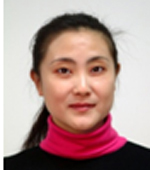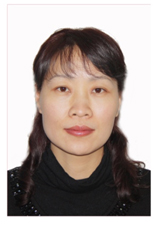The Formation and Coarsen Behavior of Laves Phase in P92 Steel during Aging

摘 要
采用等温时效处理模拟实际工况, 在650 ℃分别对P92钢进行了不同时间(200~5 000 h)的时效处理, 并采用扫描电镜、透射电镜等手段对材料中Laves相的形成及粗化规律进行了研究。结果表明: Laves相在时效200 h左右已经出现, 并且随着时效时间的延长Laves相尺寸不断增大; 时效2 000 h后, Laves相出现了明显的聚集和粗化, 并且已经成为P92钢中平均尺寸最大的析出相。
 时效
时效  Laves相
Laves相  粗化
粗化  P92 steel
P92 steel  aging
aging  Laves phase
Laves phase  coarsening
coarsening 
Abstract
The P92 steel was aged at 650 ℃ for different periods of time (200-5 000 h) in a isothermal aging test for simulation of actual working conditions. The formation and coarsen behavior of Laves phase were investigated using SEM and TEM. The results indicate that Laves phase formed when the specimen was aged up to 200 h, and the size of Laves phase continued to increase with the prolongation of aging time. After being aged for 2 000 h, the Laves phase aggregated and coarsened obviously, and average size of Laves phase was the largest in P92 steel.
中图分类号 TG142.1
所属栏目 试验研究
基金项目
收稿日期 2013/7/9
修改稿日期 2014/7/10
网络出版日期
作者单位点击查看
备注郭晓峰(1986-), 男, 内蒙古包头人, 讲师, 硕士。
引用该论文: GUO Xiao-feng,GONG Jian-ming,JIANG Yong. The Formation and Coarsen Behavior of Laves Phase in P92 Steel during Aging[J]. Materials for mechancial engineering, 2014, 38(10): 6~8
郭晓峰,巩建鸣,姜勇. P92钢中Laves相在时效过程中的形成及粗化规律[J]. 机械工程材料, 2014, 38(10): 6~8
共有人对该论文发表了看法,其中:
人认为该论文很差
人认为该论文较差
人认为该论文一般
人认为该论文较好
人认为该论文很好






参考文献
【1】王卫泽, 王玥, 朱月梅, 等. 我国P91/T91钢生产及其性能的现状及进展[J].机械工程材料, 2010, 34(6): 6-9.
【2】程钧培. 节能减排与火电新技术[J].动力工程, 2009, 29(1): 1-4.
【3】NAGODE A, KOSEC L, ULEB, et al. Review of creep resistant alloys for power plant application[J].Metalurgija, 2011, 50(1): 45-48.
【4】VAILLANT J C, VANDENBERGHE B, HAHNC B, et al. T/P23, 24, 911 and 92: new grades for advanced coal-fired power plants-properties and experience[J].Int J Pressure Vessels and Piping, 2008, 85: 38-46.
【5】史轩. 超超临界电站锅炉关键材料的新进展[J].机械工程材料, 2009, 33(9): 1-5.
【6】SAWADA K, KUBO K, ABE F. Creep behavior and stability of MX precipitates at high temperature in 9Cr-0.5Mo-1.8W-VNb steel[J].Materials Science and Engineering: A, 2001, 319/321: 784-787.
【7】MARUYAMA K, SAWADA K, KOIKE J. Strengthening mechanisms of creep resistant tempered martensitic steel[J].ISIJ International, 2001, 41(6): 641-653.
【8】LEE J S, ARMAKI H G, MARUYAMA K, et al. Causes of breakdown of creep strength in 9Cr-1.8W-0.5Mo-VNb steel[J].Materials Science and Engineering: A, 2006, 428: 270-275.
【9】SAWADA K, KUSHIMA H, KIMURA K. Z-phase formation during creep and aging in 9-12% Cr heat resistant steels[J].ISIJ International, 2006, 46(5): 769-775.
【10】HALD J. Microstructure and long-term creep properties of 9-12% Cr steels[J].Int J Pressure Vessels and Piping, 2008, 85: 30-37.
【11】DANIELSEN H K, HALD J. On the nucleation and dissolution process of Z-phase Cr(V, Nb)N in martensitic 12%Cr steels[J].Materials Science and Engineering: A, 2009, 505: 169-177.
【12】ABE F, HORIUCHI T, TANEIKE M, et al. Stabilization of martensitic microstructure in advanced 9Cr steel during creep at high temperature [J].Materials Science and Engineering: A, 2004, 378: 299-303.
【2】程钧培. 节能减排与火电新技术[J].动力工程, 2009, 29(1): 1-4.
【3】NAGODE A, KOSEC L, ULEB, et al. Review of creep resistant alloys for power plant application[J].Metalurgija, 2011, 50(1): 45-48.
【4】VAILLANT J C, VANDENBERGHE B, HAHNC B, et al. T/P23, 24, 911 and 92: new grades for advanced coal-fired power plants-properties and experience[J].Int J Pressure Vessels and Piping, 2008, 85: 38-46.
【5】史轩. 超超临界电站锅炉关键材料的新进展[J].机械工程材料, 2009, 33(9): 1-5.
【6】SAWADA K, KUBO K, ABE F. Creep behavior and stability of MX precipitates at high temperature in 9Cr-0.5Mo-1.8W-VNb steel[J].Materials Science and Engineering: A, 2001, 319/321: 784-787.
【7】MARUYAMA K, SAWADA K, KOIKE J. Strengthening mechanisms of creep resistant tempered martensitic steel[J].ISIJ International, 2001, 41(6): 641-653.
【8】LEE J S, ARMAKI H G, MARUYAMA K, et al. Causes of breakdown of creep strength in 9Cr-1.8W-0.5Mo-VNb steel[J].Materials Science and Engineering: A, 2006, 428: 270-275.
【9】SAWADA K, KUSHIMA H, KIMURA K. Z-phase formation during creep and aging in 9-12% Cr heat resistant steels[J].ISIJ International, 2006, 46(5): 769-775.
【10】HALD J. Microstructure and long-term creep properties of 9-12% Cr steels[J].Int J Pressure Vessels and Piping, 2008, 85: 30-37.
【11】DANIELSEN H K, HALD J. On the nucleation and dissolution process of Z-phase Cr(V, Nb)N in martensitic 12%Cr steels[J].Materials Science and Engineering: A, 2009, 505: 169-177.
【12】ABE F, HORIUCHI T, TANEIKE M, et al. Stabilization of martensitic microstructure in advanced 9Cr steel during creep at high temperature [J].Materials Science and Engineering: A, 2004, 378: 299-303.
相关信息
























